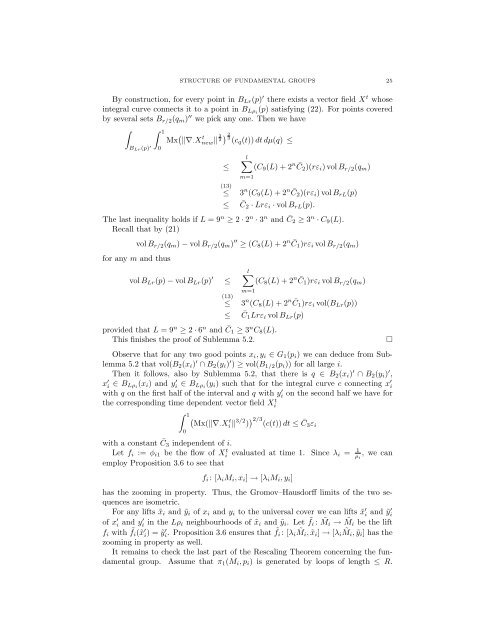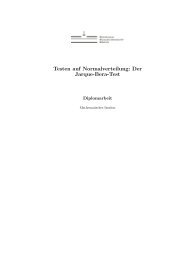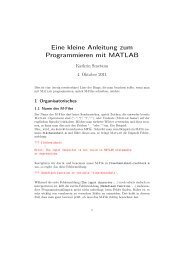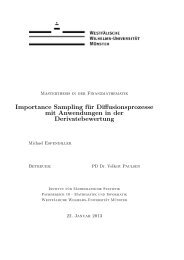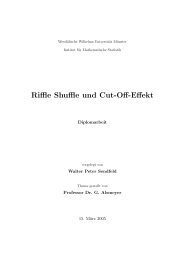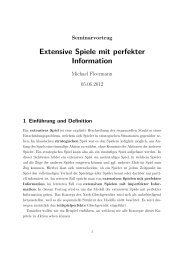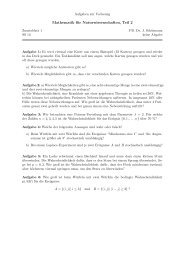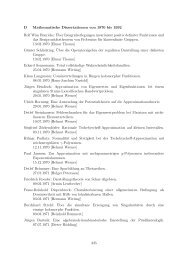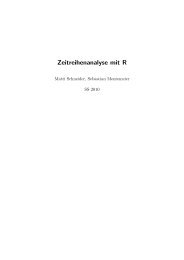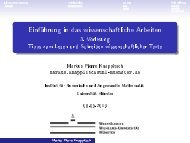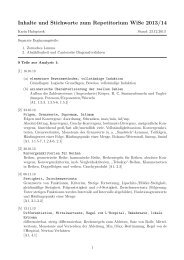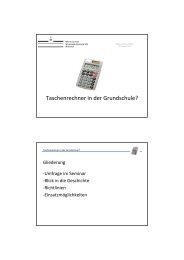Margulis Lemma
Margulis Lemma
Margulis Lemma
You also want an ePaper? Increase the reach of your titles
YUMPU automatically turns print PDFs into web optimized ePapers that Google loves.
STRUCTURE OF FUNDAMENTAL GROUPS 25<br />
By construction, for every point in B Lr (p) ′ there exists a vector field X t whose<br />
integral curve connects it to a point in B Lρi (p) satisfying (22). For points covered<br />
by several sets B r/2 (q m ) ′′ we pick any one. Then we have<br />
∫B Lr (p) ′ ∫ 1<br />
0<br />
Mx ( ‖∇·Xnew‖ t ) 3 2<br />
2 3<br />
(c q (t)) dt dµ(q) ≤<br />
≤<br />
(13)<br />
≤<br />
≤<br />
l∑<br />
(C 9 (L) + 2 n ¯C2 )(rε i ) vol B r/2 (q m )<br />
m=1<br />
3 n (C 9 (L) + 2 n ¯C2 )(rε i ) vol B rL (p)<br />
¯C 2 · Lrε i · vol B rL (p).<br />
The last inequality holds if L = 9 n ≥ 2 · 2 n · 3 n and ¯C 2 ≥ 3 n · C 9 (L).<br />
Recall that by (21)<br />
vol B r/2 (q m ) − vol B r/2 (q m ) ′′ ≥ (C 8 (L) + 2 n ¯C1 )rε i vol B r/2 (q m )<br />
for any m and thus<br />
vol B Lr (p) − vol B Lr (p) ′<br />
≤<br />
(13)<br />
≤<br />
≤<br />
l∑<br />
(C 8 (L) + 2 n ¯C1 )rε i vol B r/2 (q m )<br />
m=1<br />
provided that L = 9 n ≥ 2 · 6 n and ¯C 1 ≥ 3 n C 8 (L).<br />
This finishes the proof of Sublemma 5.2.<br />
3 n (C 8 (L) + 2 n ¯C1 )rε i vol(B Lr (p))<br />
¯C 1 Lrε i vol B Lr (p)<br />
Observe that for any two good points x i , y i ∈ G 1 (p i ) we can deduce from Sublemma<br />
5.2 that vol(B 2 (x i ) ′ ∩ B 2 (y i ) ′ ) ≥ vol(B 1/2 (p i )) for all large i.<br />
Then it follows, also by Sublemma 5.2, that there is q ∈ B 2 (x i ) ′ ∩ B 2 (y i ) ′ ,<br />
x ′ i ∈ B Lρ i<br />
(x i ) and y i ′ ∈ B Lρ i<br />
(y i ) such that for the integral curve c connecting x ′ i<br />
with q on the first half of the interval and q with y i ′ on the second half we have for<br />
the corresponding time dependent vector field Xi<br />
t<br />
∫ 1<br />
(<br />
Mx(‖∇·X t i ‖ 3/2 ) ) 2/3<br />
(c(t)) dt ≤ ¯C3 ε i<br />
□<br />
0<br />
with a constant ¯C 3 independent of i.<br />
Let f i := φ i1 be the flow of X t i evaluated at time 1. Since λ i = 1 ρ i<br />
, we can<br />
employ Proposition 3.6 to see that<br />
f i : [λ i M i , x i ] → [λ i M i , y i ]<br />
has the zooming in property. Thus, the Gromov–Hausdorff limits of the two sequences<br />
are isometric.<br />
For any lifts ˜x i and ỹ i of x i and y i to the universal cover we can lifts ˜x ′ i and ỹ′ i<br />
of x ′ i and y′ i in the Lρ i neighbourhoods of ˜x i and ỹ i . Let ˜f i : ˜Mi → ˜M i be the lift<br />
f i with ˜f i (˜x ′ i ) = ỹ′ i . Proposition 3.6 ensures that ˜f i : [λ i ˜Mi , ˜x i ] → [λ i ˜Mi , ỹ i ] has the<br />
zooming in property as well.<br />
It remains to check the last part of the Rescaling Theorem concerning the fundamental<br />
group. Assume that π 1 (M i , p i ) is generated by loops of length ≤ R.


